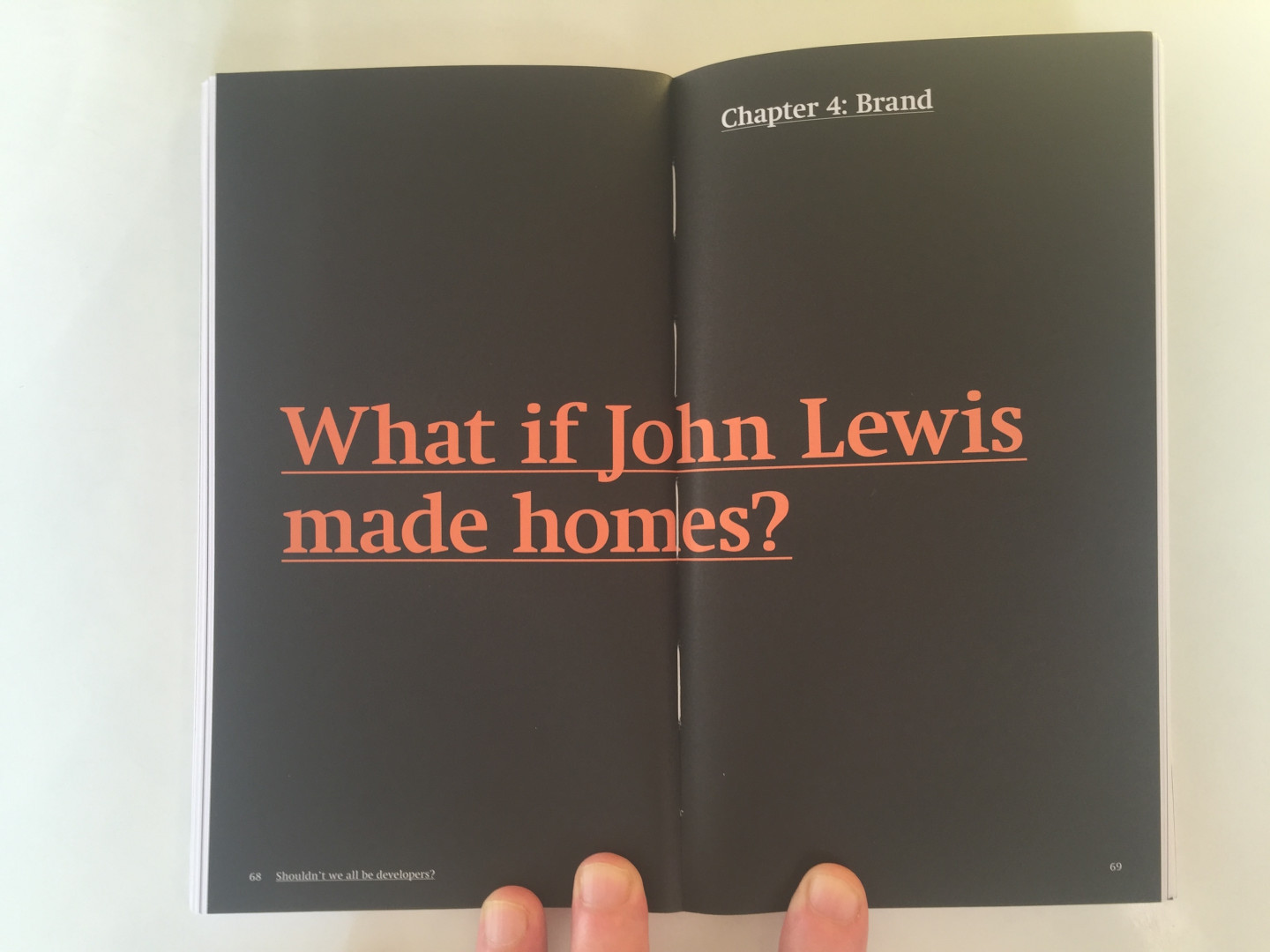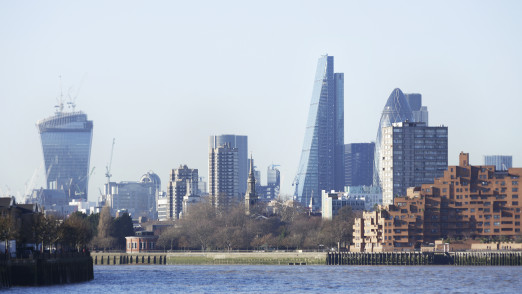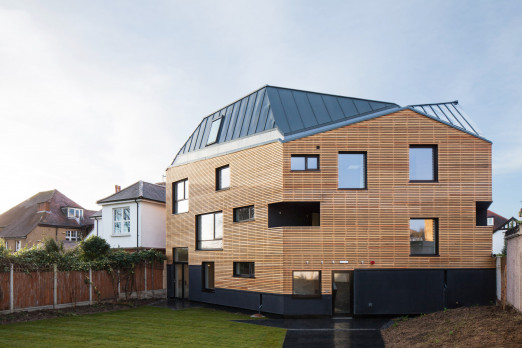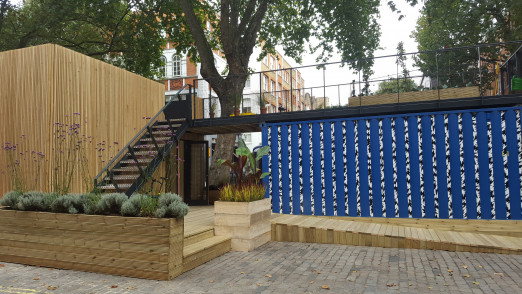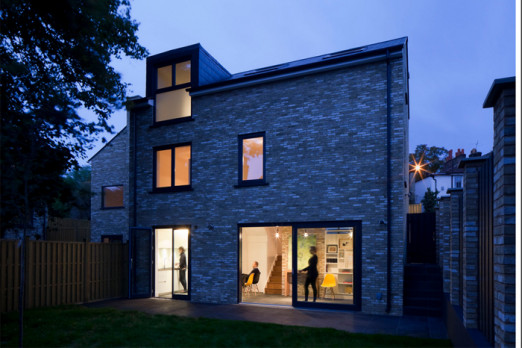It’s common to think of ‘provocation’ as bit of posturing overheated rhetoric, but provocation’s etymology is in the idea of the challenge. A New House for London is currently one challenge to conventional thinking around the housing crisis, another is Roger Zogolovitch’s recently published Shouldn’t We All Be Developers? Zogolovitch was one of the founders of CZWG, but set up Solidspace in 2003.
Ideas tumble from Zogolovitch’s highly-readable book. One of many ideas discussed below in our interview with Zogolovitch is that politicians and planners have been obsessed with big planning housing policy (each a monument to failure) so why not have lots, a multiplicity of small planning? Or considering the mistrust of the general public for large developers, why not encourage credible brands beyond the industry to build houses and build confidence with the general public.

Here are the key ideas from our interview.
On trust
“There is an enormous lack of trust, I think that part of the reasons why consultation why residents get so furious with developments that is taking place, is that they don’t trust what developers are saying to them, they don’t trust them to make it a good place, they don’t see that developers can actually improve our cities, they are the city makers. That’s the responsibility of the developer to do better. “
(The Zog House development in London's Queen's Park)
On breadmaking, brickmaking and the passion of independents
“Quite recently we didn’t have any artisan breadmaking or it was quite rare, now it’s become more generic, more people do it. We go out on a Saturday morning buy a loaf of bread at £3.50, if we wanted to have white sliced bread we’d probably buy it at the supermarket for 80 pence. We choose to pay four times the price because we find that independent way of making is something we value. What makes the breadmaker so interesting, you read stories, you believe the narrative of the baker walking around with his piece of sourdough in his pocket kneading it all the time, and you feel this kind of dedication, this passion, so you buy into it. It’s the same with the organic movements, in meat or vegetables, the same with new restaurants that are opening up. It’s that same approach [the book advocates for the developer], that notion of the independent.”
On brands and building developers
“Brands aren’t just a simple piece of marketing. They’re something that we buy into, believe in and share the culture of. As I say in the book, my feeling is if John Lewis made homes, people would say “that’s fine, that’s great, let’s have a John Lewis home.” You don’t feel that when you buy a Taylor Wimpy home, or a Barratt home. Their websites don’t encourage you to share their culture in the same way as you do when you walk into an Apple store. The point about brand is that it’s a point of trust. There is a relationship and communication between you the customer, and the brand. You should have the same thing in housing because then it means you’re not going to build nasty housing. You’re going to want the public to like what you build.”
On Japan and house shopping
“The Japanese example is very interesting. Japan has a population of 120 million and builds builds about 1.2 million houses every year. The house building industry in Japan is almost like the car industry – 1.2 million units are being built every year. Companies like Toyota make homes and sell homes. When I went to visit one of the things I discovered was the Muji home. Muji is a brand that is ‘no-brand’, it has a very recognizable style and feel. You may have a Muji notebook, a Muji bag – well if you go to the big Tokyo store they have Muji homes. You order in-store, and when I went to visit a Muji home it felt very Muji! You can buy Muji beds, Muji sofas, and they’ve just gone one step further, if you’ve got that we’ll give you the Muji home. The Japanese planning system is much more open and allows this volume of housing to be built.”
(Interiors of The Zog House)
On planning systems
“Japan has a more codified system. The American system is called an ‘as-of-right’ development. It’s codified and I think Japan is similar. It means there are rights associated with the ownership of land, which is the ability to be able to develop to certain volumes, which is what happens in America where you have codification. We have no such rights in the UK. The mechanism for developments in the UK is that we make an application for development, we then have to negotiate with the local authority through the maze of policy and statutory plans before somebody will say “yes that’s okay”. That means you have a level of interference that codification gets round. Codification simply gives you an abstract set of rules and if you are developments compliant with those rules you can build it. That has huge advantage and if you applied it to the UK would speed up the process of delivery.”
On social media and development process
“The developer is someone who disappears into the background, all I ever see is this notice stuck to a tree. What I’m saying is that that’s unacceptable in today’s feedback community. In one of the Dream Scenarios [sections in the book] I argued that the technology and social media exists to enable a new and more open method of communication. You see that in the political process with Jeremy Corbin, the Labour Party has 600,000 voters, members, Corbin was elected with that kind of big scale groundswell of opinion. You have the same with Zac Goldsmith, I don’t think he’s yet been appointed by the Tory party, he went to his constituency in Richmond and got very wide support.”
(Essex Mews, south east London)
On the emergent building
“The book and my career is really devoted to gap sites, when you’re looking at the gap site you have to be very much aware of all the elements that surround it. It might be an elevated railway, it might be a small backstreet garage, it might be row of Georgian houses or a Victorian school building. If you do the analysis of that at fine grain it might be a really important tree, it might be the sun coming up on one side and going down on the other, it might even be an important billboard. All of these things are a visual understanding of that part of the city, and a good developer starts to look at all of that as context and tries to make something which doesn’t try and ape that context but sits in a new and imaginative way, creating something new but that could only be there. That’s not building in vernacular but building in response, almost like a painter builds a response to the context.”
On the power of “small”
“The shortage of housing, the affordability of housing, the 17 years to save up for your deposit – is increasingly becoming important on the political horizon. I think London’s new Mayor or Mayoress or whoever it will be in 2016, is going to engage with that issue of housing in London because that is where it’s critically very difficult. There will be two competing campaigns I think, there will be a campaign that is being pursued by the house builder to say there is no answer to London’s housing problem other than building on the greenbelt. And then there is a campaign which we are promoting in the book to say, “that is not true”. You can build in London, what we have to do is to build carefully, infilling gap sites wherever we find them, whatever densities, accept we’re building them at bigger densities, but protect the greenbelt around London. But the housebuilders will answer, “you can’t possibly do that, you’ll never get half-a-million homes.” And my approach is saying actually out of a lot of independent developers, if we plant small flowers, if we plant enough of them we end up with very big field. Historically all big plans in a housing have failed, so I’m saying don’t have big plans just lets have small engaging plans that make really interesting things in all the nooks and crannies and diversity, and out of that we can get a sea change in the volume of housing.”
